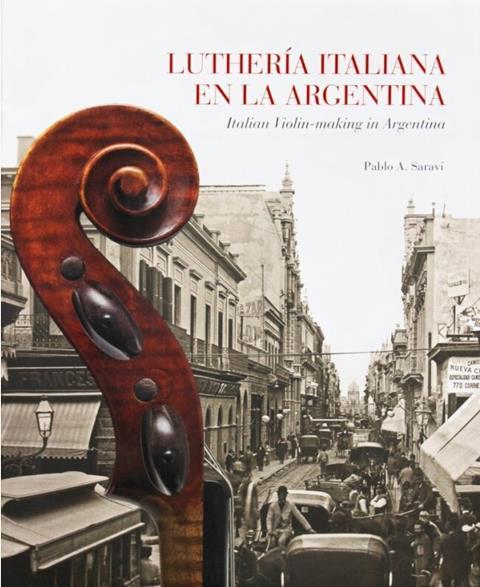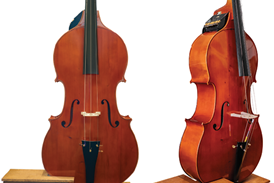Bharat Khandekar reviews Pablo A. Saraví’s publication on the little-known culture of lutherie among the immigrant population of South America’s second-largest country

Italian Violin Making in Argentina
Pablo A. Saraví
376PP ISBN 9789878657127
AUTHOR’S EDITION €125
Argentina, with its unique culture enriched by vast immigration, friendly people and cycles of economic boom and bust, epitomises the romance of travel and adventure, yet little is known of the wealth of fine instruments made there. How often do you see an instrument catalogued in the London auction rooms as originating from Argentina?
This masterful work by Pablo A. Saraví casts light on the many, varied and often overlooked violin makers of Argentina, many who emigrated from Europe, notably Italy, during the 19th and early 20th centuries. The book is based on the original work by the same author published in 2002, but has been revised and expanded; anyone who enjoyed the first edition will also want a copy of this new version which has been thoroughly and passionately researched by the author. I have learnt a lot while reading this book and realised that some instruments I had seen in the past were in fact made in Argentina! Even though this book is a fascinating and enjoyable read, it also represents a great reference resource which should be on the shelf of every violin shop, collector, dealer and enthusiast. The historic photographs and biographies would also be of interest to musicians and social historians, and violinists are sure to find plenty to lust after among the copious illustrated examples.
As a bonus, and perhaps the section of this publication of most interest to violin makers, is a partial catalogue of notable instruments from the Isaac Fernández Blanco Museum in Buenos Aires. This collection includes violins by Guarneri ‘del Gesù’ (below), Storioni, Mantegazza, Landolfi, Rogeri, Guadagnini and many others, and the photographs in this section are of superb quality. The author explains that unrestored instruments have not been included – which makes me wonder what other gems are in that museum.
Read: Lutherie in Argentina: New world wonders
Read: Argentina’s first stringed-instrument gallery set for opening
Read: Guarneri ‘del Gesù’ violin takes centre stage in new Buenos Aires instrument gallery
As this volume represents excellent value for money in the world of violin reference books, it feels a little churlish of me to point out that some of the photographs have been snapped in less than ideal conditions, but this is a small gripe for a volume presented excellently overall, and perhaps it simply cannot be possible to bring rare examples of violins into a studio.
After reading this book I am planning a trip to Argentina, not only to see the Blanco museum but to experience Argentina itself. This work not only shares a huge knowledge of a little-known subject but also tells a fascinating story. This book comes highly recommended.
BHARAT KHANDEKAR









































No comments yet